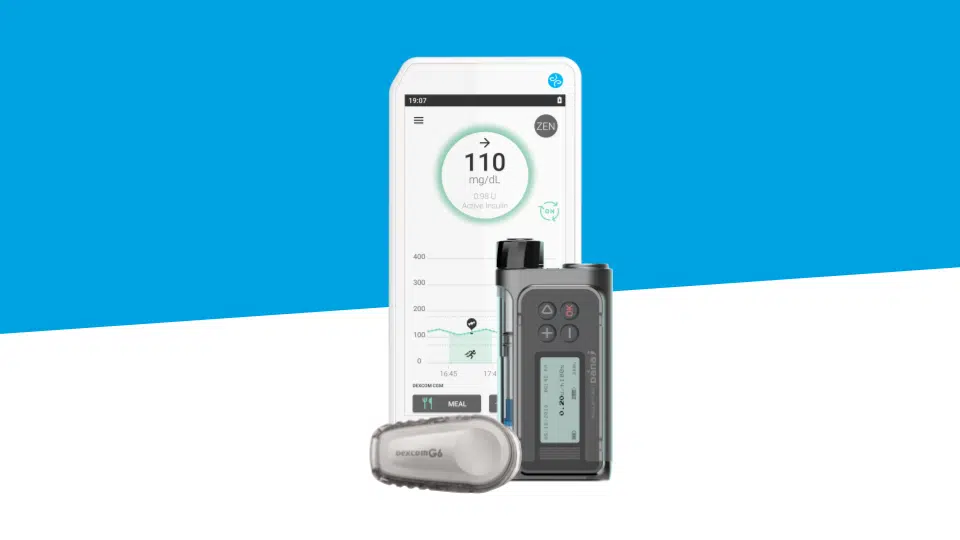
Type 1 Diabetes Diagnosis At Every Life Stages
While Type 1 diabetes usually develops before the age of 20, with a peak at around 12 years of age, it can actually be diagnosed at any age. In babies, children, teenagers, young adults or later on in life, Type 1 diabetes can come in various forms and involve varying challenges.
Type 1 diabetes In Babies And Young Children
Children under 6 years old are not generally aware that they have an illness. It’s only after age 7 that they start to develop the more advanced cognitive processes they need to fully understand their condition. However, even before this pivotal age, the circumstances surrounding the diagnosis of their diabetes may make them realize something is wrong (admission to a hospital, constant blood tests, injections, etc. ).
Read more: Type 1 Diabetes: Symptoms And Diagnosis
A diagnosis of Type 1 diabetes in a baby or young child will always be a considerable upheaval for parents, forcing them to completely reorganize family life. In such cases, patient education will focus on the parents, since they are the ones who will need to manage their child’s insulin treatments and diet day to day.
In babies and young children with Type 1 diabetes, insulin therapy is based on a standard regimen, combining basal insulin (or its equivalent if an insulin pump is used) and bolus insulin to cover meals. Insulin pumps are often the most suitable treatment method for infants, since they avoid the need for multiple injections over the course of the day.
When it comes to diet, as in other babies, breast-feeding is recommended up to the age of 6 months and can be continued beyond. And when it’s time to begin weaning your baby, it is recommended to follow the same steps as for any other child.
Type 1 Diabetes In Children
As babies grow into young children, they gradually move on from being completely dependent and begin to develop some autonomy: this is an essential transition period.
At around the age of 7, kids start to interact more and encounter different environments, through sports, activities, and school, and to become more aware of their condition.
Read more: I Have Type 1 Diabetes, And So Does My Child
Over time, with parental support, children with Type 1 diabetes will gradually learn how to manage their treatment and their condition. As they get older, they will develop the skills they need to treat themselves, such as understanding their illness, the technical ability to perform monitoring, coping with hypoglycemic or hyperglycemic episodes. And if they are able to make the commitment and effort required to learn how to manage their diabetes, they will soon become more independent.
Type 1 Diabetes In Teenagers: Communication Is The Key
The teenage years are a time of intense upheaval, both in terms of hormones and relationships with family and peers.
In teens with pre-existing diabetes (discovered during their childhood), this is often a time of treatment rejection and less glucose control. The changing lifestyle of teenagers may also be accompanied by more intensive sports, more frequent dietary lapses and more frequent socializing with friends, possibly involving alcohol or other substances. The risk of acute complications of diabetes is increased during this period, primarily as a result of less parental supervision and changes in lifestyle. The main complications in teens are hypoglycemic and hyperglycemic episodes, or even ketoacidosis as a result of not taking enough insulin or stopping their insulin treatment completely. As they approach adulthood, however, these major issues generally begin to resolve.
Read more: How Does A Preteen Deal With Type 1 Diabetes?
If their diabetes is diagnosed during adolescence, it can be particularly difficult for teenagers to accept their condition and stick to their treatment, resulting in the accentuation of the difficulties outlined above.
Type 1 diabetes in adults
A diagnosis of diabetes is classic in young adulthood and often comes out of the blue.
Later in life, at the age of around fifty, Type 1 diabetes may look like Type 2 diabetes, particularly in people who are overweight. However, a number of factors point towards Type 1 diabetes: a lack of family history of diabetes and the need to quickly step up treatment to correct high blood glucose levels, with recourse to insulin required within a relatively short period of time.
Getting older with Type 1 diabetes
Type 1 diabetes evolves as you age.
In the elderly, the condition has a number of specific characteristics: in particular, there are more coexisting conditions or “comorbidities”. This often leads to changes in diet. As a result, appropriate management is required, not only with a view to adjusting treatment if necessary but also in order to manage overall health. For instance, diabetes treatments can interfere with other medical treatments often common in the elderly. It’s important to look out for cognitive problems that could impede good diabetes control, as well as neurological diseases such as Alzheimer’s or other forms of dementia. The natural ageing process and the resulting impacts on the ability to exercise and rely on various senses, such as hearing and taste, also need to be taken into account. The support of a geriatric specialist or a primary care practitioner will quickly become essential.
Type 1 diabetes can affect people at very different ages. The management of Type 1 diabetes needs to be adapted to each stage of life.







